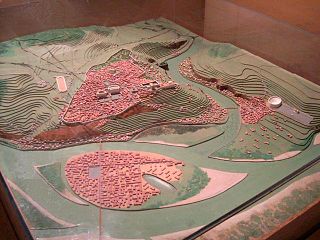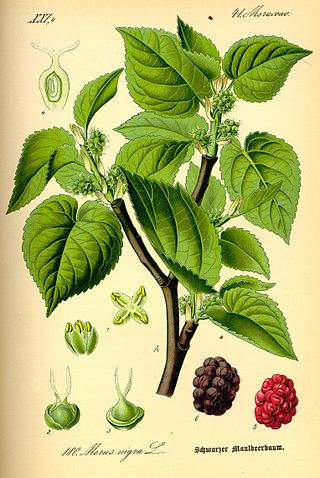Related Research Articles

The Celts or Celtic peoples were a collection of Indo-European peoples in Europe and Anatolia, identified by their use of Celtic languages and other cultural similarities. Major Celtic groups included the Gauls; the Celtiberians and Gallaeci of Iberia; the Britons, Picts, and Gaels of Britain and Ireland; the Boii; and the Galatians. The relation between ethnicity, language and culture in the Celtic world is unclear and debated; for example over the ways in which the Iron Age people of Britain and Ireland should be called Celts. In current scholarship, 'Celt' primarily refers to 'speakers of Celtic languages' rather than to a single ethnic group.

Trier, formerly and traditionally known in English as Trèves and Triers, is a city on the banks of the Moselle in Germany. It lies in a valley between low vine-covered hills of red sandstone in the west of the state of Rhineland-Palatinate, near the border with Luxembourg and within the important Moselle wine region.

Gaul was a region of Western Europe first clearly described by the Romans, encompassing present-day France, Belgium, Luxembourg, and parts of Switzerland, the Netherlands, Germany, and Northern Italy. It covered an area of 494,000 km2 (191,000 sq mi). According to Julius Caesar, who took control of the region on behalf of the Roman Republic, Gaul was divided into three parts: Gallia Celtica, Belgica, and Aquitania.

Sambucus is a genus of flowering plants in the family Adoxaceae. The various species are commonly referred to as elder, elderflower or elderberry.

The common scoter is a large sea duck, 43–54 cm (17–21 in) in length, which breeds over the far north of Europe and the Palearctic east to the Olenyok River. The black scoter of North America and eastern Siberia was formerly considered to be a subspecies.

Thérouanne is a commune in the Pas-de-Calais department in the Hauts-de-France region of France. It is located 10 km (6.2 mi) west of Aire-sur-la-Lys and 13 km (8.1 mi) south of Saint-Omer, on the D 157 and D 341 road junction. Located on the river Lys.

Lugdunum was an important Roman city in Gaul, established on the current site of Lyon. The Roman city was founded in 43 BC by Lucius Munatius Plancus, but continued an existing Gallic settlement with a likely population of several thousands. It served as the capital of the Roman province of Gallia Lugdunensis and was an important city in the western half of the Roman Empire for centuries. Two emperors, Claudius and Caracalla, were born in Lugdunum. In the period 69–192 AD, the city's population may have numbered 50,000 to 100,000, and possibly up to 200,000 inhabitants.

Terra sigillata is a term with at least three distinct meanings: as a description of medieval medicinal earth; in archaeology, as a general term for some of the fine red Ancient Roman pottery with glossy surface slips made in specific areas of the Roman Empire; and more recently, as a description of a contemporary studio pottery technique supposedly inspired by ancient pottery. Usually roughly translated as 'sealed earth', the meaning of 'terra sigillata' is 'clay bearing little images', not 'clay with a sealed (impervious) surface'. The archaeological term is applied, however, to plain-surfaced pots as well as those decorated with figures in relief, because it does not refer to the decoration but to the makers stamp impressed in the bottom of the vessel.

New Holland is a historical European name for mainland Australia.

Roman Gaul refers to Gaul under provincial rule in the Roman Empire from the 1st century BC to the 5th century AD.

Sambucus nigra is a species complex of flowering plants in the family Adoxaceae native to most of Europe. Common names include elder, elderberry, black elder, European elder, European elderberry, and European black elderberry. It grows in a variety of conditions including both wet and dry fertile soils, primarily in sunny locations. The plant is widely grown as an ornamental shrub or small tree. Both the flowers and the berries have a long tradition of culinary use, primarily for cordial and wine.

Morus nigra, called black mulberry, is a species of flowering plant in the family Moraceae that is native to southwestern Asia, where it has been cultivated for so long that its precise natural range is unknown. The black mulberry is known for its large number of chromosomes.
The Wych Elm cultivar Ulmus glabra 'Nigra', commonly known as the Black Irish Elm, was found in the Kilkenny area c.1770 by the father of nurseryman John Robertson of Kilkenny, who later cultivated it. Robertson stated that he had not seen the form outside Ireland. It was listed by Loddiges (1830) as Ulmus nigra, and described by Loudon in Arboretum et Fruticetum Britannicum (1838), as Ulmus montana nigra. 'Nigra' is not mentioned in either Elwes and Henry's or Bean's classic works on British trees.
The various names used since classical times for the people known today as the Celts are of disparate origins.

Celtic coinage was minted by the Celts from the late 4th century BC to the mid 1st century AD. Celtic coins were influenced by trade with and the supply of mercenaries to the Greeks, and initially copied Greek designs, especially Macedonian coins from the time of Philip II of Macedon and his son, Alexander the Great. Thus Greek motifs and even letters can be found on various Celtic coins, especially those of southern France.

Pottery was produced in enormous quantities in ancient Rome, mostly for utilitarian purposes. It is found all over the former Roman Empire and beyond. Monte Testaccio is a huge waste mound in Rome made almost entirely of broken amphorae used for transporting and storing liquids and other products – in this case probably mostly Spanish olive oil, which was landed nearby, and was the main fuel for lighting, as well as its use in the kitchen and washing in the baths.

The Gauls were a group of Celtic peoples of mainland Europe in the Iron Age and the Roman period. Their homeland was known as Gaul (Gallia). They spoke Gaulish, a continental Celtic language.

Ostrovačice is a market town in Brno-Country District in the South Moravian Region of the Czech Republic. It has about 900 inhabitants.
A vergobret was a magistrate in ancient Gaul who held the highest office in many Gallic cities, especially among the Aedui. Julius Caesar discusses the role of the vergobret several times in his Commentaries on the Gallic War, referring to the office with the terms princeps civitatis, principatus, and magistratus.

Drumquhassle was a Roman fort associated with the Gask Ridge in Scotland. It was found from aerial photography in the late 1970s. The name selected for the fort deliberately made it hard for English born readers to pronounce. The fort was from the Flavian period; it was built and briefly occupied by during the administration of Sallustius Lucullus. It is known as a "Glen-blocker" fort and is located within sight of Loch Lomond.
References
- ↑ "terra nigra". Oxford Reference. Retrieved 2024-06-16.
- ↑ "Terra nigra". potsherd.net. Retrieved 2024-06-16.
- ↑ "Terra Nigra". anthropologylabs.umn.edu. Retrieved 2024-06-16.